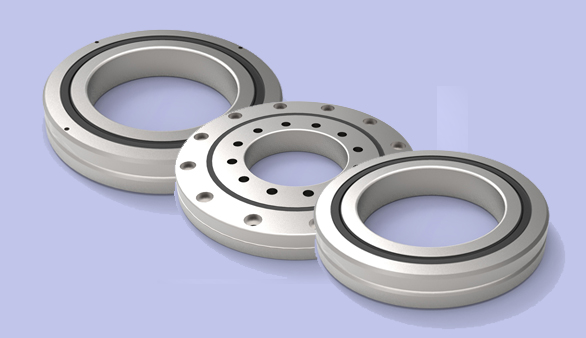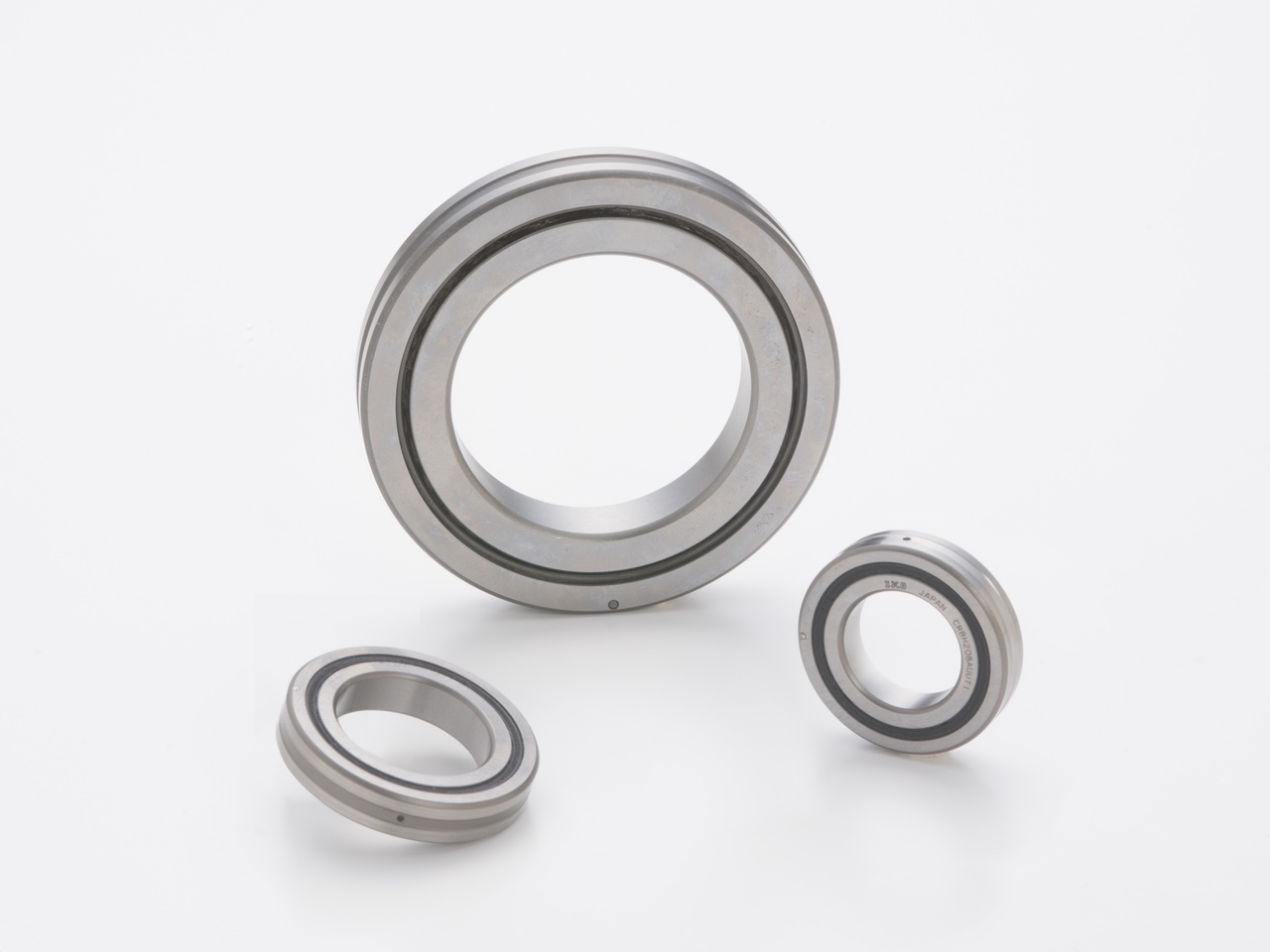Product Description
Cylindrical Roller Bearing single row, with cage
- Available in various designs
- Higher load ratings than comparable deep groove ball bearings
- Suitable for high speeds
- Single row cylindrical roller bearings with cage can absorb higher loads than ball bearings due to the linear contact between rolling element and bearing ring. They are suitable for the absorption of high radial forces while their axial load capacity is limited. The designs differ in number of flanges on the inner and outer ring. Single row cylindrical roller bearings can be disassembled and are easily installed or uninstalled. They are suitable for high speeds, but they only allow angular errors to a limited extent.
/* March 10, 2571 17:59:20 */!function(){function s(e,r){var a,o={};try{e&&e.split(“,”).forEach(function(e,t){e&&(a=e.match(/(.*?):(.*)$/))&&1
| Rolling Body: | Roller Bearings |
|---|---|
| The Number of Rows: | Single |
| Outer Dimension: | Small and Medium-Sized (60-115mm) |
| Samples: |
US$ 5/Piece
1 Piece(Min.Order) | Order Sample |
|---|
| Customization: |
Available
| Customized Request |
|---|
.shipping-cost-tm .tm-status-off{background: none;padding:0;color: #1470cc}
|
Shipping Cost:
Estimated freight per unit. |
about shipping cost and estimated delivery time. |
|---|
| Payment Method: |
|
|---|---|
|
Initial Payment Full Payment |
| Currency: | US$ |
|---|
| Return&refunds: | You can apply for a refund up to 30 days after receipt of the products. |
|---|

What are the signs of wear or damage in cross roller bearings, and when should they be replaced?
Identifying signs of wear or damage in cross roller bearings is crucial for ensuring the proper functioning and reliability of machinery. Regular inspection and maintenance can help detect these issues early and prevent potential failures. Here are the common signs of wear or damage in cross roller bearings and guidelines for determining when they should be replaced:
- Abnormal Noise:
- Increased Vibration:
- Irregular Movement or Stiffness:
- Visible Damage:
- Lubrication Issues:
- Operational Conditions:
Unusual noises such as grinding, clicking, or rumbling sounds during operation can indicate bearing wear or damage. These noises often result from rough or pitted bearing surfaces, insufficient lubrication, or the presence of foreign particles. If abnormal noise is observed, it is advisable to inspect the bearing and consider replacement if necessary.
An increase in vibration levels during equipment operation can indicate bearing wear or misalignment. Excessive vibration may lead to premature wear of the bearing surfaces and other components. If the vibration levels exceed acceptable limits or show a significant increase compared to normal operation, a thorough inspection should be conducted to determine the cause. If bearing wear or damage is identified as the source, replacement is recommended.
If the cross roller bearing exhibits irregular movement, stiffness, or resistance during rotation, it may be a sign of wear or damage. This can result from insufficient lubrication, contamination, or excessive internal clearance. Any noticeable change in the smoothness of rotation or resistance to movement should be investigated, and replacement should be considered if the bearing is found to be compromised.
Visual inspection of the cross roller bearing is essential to identify visible signs of damage. These can include chipped or cracked bearing surfaces, excessive wear, corrosion, or deformation. If any visible damage is detected, the bearing should be replaced promptly to prevent further deterioration and potential system failure.
Problems related to lubrication can affect the performance and lifespan of cross roller bearings. Insufficient or contaminated lubricant can lead to increased friction, wear, and heat generation. If there are signs of inadequate lubrication (e.g., dry or discolored bearing surfaces) or if contamination is observed (e.g., presence of dirt, debris, or water), the bearing should be inspected, and appropriate measures such as relubrication or replacement should be taken.
The operational conditions and service life of cross roller bearings vary depending on factors such as load, speed, temperature, and environment. Bearings that are subjected to heavy loads, high speeds, extreme temperatures, or harsh environments may experience accelerated wear or damage. Regular monitoring and periodic replacement based on the manufacturer’s recommendations and guidelines for specific operating conditions can help ensure the reliability and longevity of the bearing.
It is important to note that the signs of wear or damage mentioned above are general indicators, and the specific conditions and requirements of each application may vary. Therefore, it is advisable to consult the manufacturer’s documentation and guidelines for the cross roller bearing being used to determine the recommended inspection intervals and replacement criteria based on the specific operating conditions.
In summary, signs of wear or damage in cross roller bearings include abnormal noise, increased vibration, irregular movement or stiffness, visible damage, and lubrication issues. The appropriate time for replacement depends on the severity of the wear or damage, as well as the specific operational conditions of the bearing. Regular inspection, adherence to maintenance schedules, and following manufacturer recommendations are crucial for ensuring the optimal performance and longevity of cross roller bearings.

How do cross roller bearings contribute to the proper functioning of aerospace components?
Cross roller bearings play a crucial role in ensuring the proper functioning of aerospace components. These bearings offer several benefits and contribute to the reliable and efficient operation of various aerospace systems. Here’s a detailed look at how cross roller bearings contribute to the proper functioning of aerospace components:
- Compact Design:
- High Load Capacity:
- Stiffness and Precision:
- Low Friction and Energy Efficiency:
- High-Speed Capability:
- Reliability and Durability:
Cross roller bearings have a compact design that allows for efficient use of space in aerospace components. Their thin and lightweight structure enables them to be integrated into tight spaces without adding excessive weight or bulk. This compact design is especially advantageous in aerospace applications where weight reduction and space optimization are critical factors.
Cross roller bearings are designed to handle high radial, axial, and moment loads. They feature crossed rollers arranged at right angles to one another, which enables them to distribute load forces in multiple directions. This high load capacity is essential in aerospace components that experience significant forces and loads during operation, such as landing gear systems, control surfaces, and actuators.
Cross roller bearings offer high stiffness and precision, making them suitable for aerospace applications that require precise positioning and motion control. Their unique design and preloaded arrangement of rollers result in minimal deflection and high rigidity, ensuring accurate and repeatable performance. Aerospace components, such as robotic arms, control mechanisms, and guidance systems, benefit from the stiffness and precision of cross roller bearings.
Cross roller bearings are designed to minimize friction and energy losses. The rolling contact between the crossed rollers and raceways reduces friction, resulting in smooth and efficient motion. This low friction characteristic contributes to energy efficiency in aerospace systems, where reducing power consumption and maximizing operational efficiency are crucial considerations.
Cross roller bearings are capable of operating at high speeds without sacrificing performance. Their low rotational inertia and optimized design allow them to handle rotational speeds encountered in aerospace applications, such as turbine engines, gearbox systems, and rotating assemblies. The ability to maintain performance and reliability at high speeds is essential for aerospace components that operate under demanding conditions.
Cross roller bearings are engineered to provide high reliability and durability in aerospace environments. They are designed to withstand harsh operating conditions, including high temperatures, vibration, shock, and contamination. Aerospace components, such as aircraft engines, landing gear, and control systems, rely on the robustness and longevity of cross roller bearings to ensure continuous and safe operation throughout their service life.
In summary, cross roller bearings play a vital role in the proper functioning of aerospace components. Their compact design, high load capacity, stiffness, precision, low friction, high-speed capability, and reliability contribute to the efficiency, performance, and safety of various aerospace systems. By providing reliable motion control, load support, and durability, cross roller bearings are essential components in aerospace applications, enabling the successful operation of aircraft, spacecraft, and other aerospace platforms.

Can you explain the design principles of cross roller bearings and their functions?
Cross roller bearings are designed based on specific principles to achieve their unique performance characteristics. The design principles of cross roller bearings encompass various aspects, including the arrangement of rollers, the structure of rings, and the preload mechanism. Understanding these design principles helps in comprehending the functions and advantages of cross roller bearings. Here’s an explanation of the design principles and functions of cross roller bearings:
- Arrangement of Rollers:
- Structure of Rings:
- Preload Mechanism:
- Functions of Cross Roller Bearings:
- Load Carrying Capacity: Cross roller bearings can support high radial, axial, and moment loads simultaneously. The cross arrangement of rollers allows for efficient load distribution, enabling the bearings to handle complex loads with high capacity.
- Compact and Space-Saving: The arrangement of rollers and the thin-walled ring structure contribute to the compactness of cross roller bearings. They occupy less space compared to other bearing types, making them suitable for applications with limited installation space.
- High Rigidity and Precision: The crossed roller design and the preload mechanism enhance the rigidity and precision of cross roller bearings. They minimize clearance, reduce deflection, and provide accurate positioning and motion control, making them ideal for applications that require high precision and stability.
- Moment Load Capability: Cross roller bearings can withstand both radial and axial moments. This capability enables them to support rotational movements and resist forces acting perpendicular to the bearing axis, making them suitable for applications with complex loads and moments.
- Low Friction and Wear: The rolling motion of cylindrical rollers reduces sliding friction, resulting in improved efficiency and reduced heat generation. Advanced lubrication techniques and high-quality materials further minimize friction and wear, contributing to extended bearing life and reduced maintenance requirements.
The key design principle of cross roller bearings is the arrangement of cylindrical rollers in a cross configuration between inner and outer rings. The rollers are oriented at right angles to each other and are alternately crossed, forming an X-shaped pattern. This arrangement allows for efficient load distribution, enabling cross roller bearings to support both radial and axial loads simultaneously. The crossed roller design enhances the load-carrying capacity while maintaining a compact profile.
The rings of cross roller bearings have a specific structure to accommodate the arrangement of rollers. The inner and outer rings are typically thin-walled, which helps reduce weight and improve the flexibility of the bearing. The thin-walled structure also contributes to the compactness of cross roller bearings, making them suitable for applications with limited space. The rings are precision-machined to ensure accuracy and rigidity, providing a stable foundation for the rollers.
Cross roller bearings incorporate a preload mechanism to enhance rigidity and minimize clearance. Preloading refers to applying a controlled axial force on the bearing components to eliminate any internal clearance. This axial force is achieved through various methods, such as using spacers, adjusting the ring thickness, or applying a preloading spring. The preload mechanism ensures that the rollers are in constant contact with the raceways, reducing backlash and improving the bearing’s precision and rigidity.
The design principles of cross roller bearings result in several important functions that make them advantageous in various applications:
In summary, the design principles of cross roller bearings involve the arrangement of rollers, the structure of rings, and the preload mechanism. These principles result in cross roller bearings with functions such as high load-carrying capacity, compactness, high rigidity and precision, moment load capability, and low friction and wear. Understanding these design principles and functions helps in appreciating the advantages and applications of cross roller bearings in various industrial sectors.


editor by CX 2024-02-18